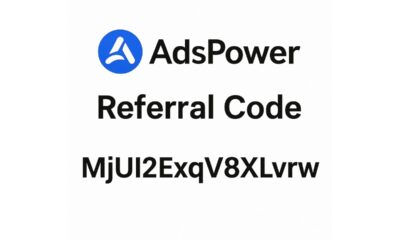Business
How do B2B Business Models Work? What Makes B2B Different from B2C and DTC?

B2B is an abbreviation for “business to business.” It is a type of business strategy in which one or more companies produce goods and services for other companies and organizations. B2B businesses include organizations that manufacture and sell various materials, marketing agencies, and providers of software as a service (SaaS). To maintain customer loyalty, B2B businesses must continually innovate to address specific issues like cash flow management.
We’ll look at the business-to-business (B2B) model and how it can help businesses grow their earnings and market share.
How do B2B business models work?
In the business-to-business model, organizations and associations exchange services and products. For example, one company might enter into a contract with another company to provide the raw materials that are required to make a product.
To stock their shelves, one company might need to buy products from another, and other businesses might hire other companies to promote their products and services, guarantee their operations, design their logo, or write content for their websites.
Consumers may not play a direct role in B2B transactions, but they are an important part of why B2B organizations collaborate.
The supply chain also includes business-to-business (B2B) business models. B2C (business-to-consumer) or DTC (direct-to-consumer) businesses sell products and services directly to consumers, whereas B2B (business-to-business) companies sell to other private businesses, public-sector organizations, and charities.
Some businesses mix their B2B and B2C models. Products and services may be used by both businesses and consumers, or they may have distinct product ranges or versions designed specifically for businesses and consumers.
Where do business-to-business companies sit in the supply chain?
To understand how B2B businesses contribute to the supply chain, it is essential to examine the three economic sectors: primary, secondary, and tertiary.
- Primary market: The primary market is exclusively B2B. Farmers and oil and gas companies are examples of companies in the primary sector that are in charge of extracting or producing raw materials.
- Secondary market: The secondary market is closely exclusively B2B. Most business-to-business market is comprised of products produced and manufactured by secondary market businesses. They change raw materials acquired from the main market to boost their worth. Think about manufacturers that turn oil into plastics or jewelers that cut and polish diamonds. Car manufacturers and construction companies are examples of secondary-market assembling companies. Businesses in the secondary market occasionally use the B2C model, such as farmers who operate market stalls and sell their products.
- Tertiary market: B2B and B2C models are mixed in the tertiary market. Businesses and consumers alike require products or services from some tertiary-market industry. These businesses include plumbers, internet retailers, floor installers, grocery stores, commercial finance brokers, home renovation professionals, tutors, and the hospitality industry.
Challenges of running a B2B business
Finding businesses to buy their goods and services is probably the most effective challenge that most B2B businesses need. B2B marketplaces are much smaller than models that are marketed to consumers. A B2C clothing e-commerce website, for instance, would have a significant number of potential customers.
On the other hand, businesses frequently purchase more goods than consumers do, and their budgets are significantly larger. As a result, even if a B2B company sells fewer products, it has a greater chance of profit than a B2C company.
B2B companies face several notable challenges, which are summarized below.
- B2B companies are required to keep coming up with new concepts and keep their customers coming back.
Innovation is a critical issue for many B2B companies, particularly those that sell subscription-based products and services like SaaS packages and online accounting software.
To increase their chances of expanding their market share and retaining the loyalty of their customers, B2B companies need to devise novel strategies for continuously improving the usability and functionality of their products. In addition, their competitors are working on the same never-ending process of improving their products.
- B2B companies must establish a trustworthy online presence
For their customers to find them and easily navigate their offerings, B2B companies must invest in a well-designed and consistently maintained business website. Search engine optimization (SEO), as well as mobile optimization, are essential for getting a high Google ranking.
Your website’s content, including as blogs, tutorials, product descriptions, and whitepapers, should appeal to consumers and prospects at all three levels of the sales funnel: awareness, investigation, and action.
- Awareness stage (top of the funnel): This stage occurs when a potential client recognizes there are areas of friction in their business or prospects for which they do not currently have the staff, technology, or understanding to pursue.
- Investigative stage (middle of the funnel): In this stage, a potential customer is actively looking for a solution at this point, and they are aware that there are numerous providers and solutions. During the investigation phase, clients explore several options and suppliers, often depending on website information to make judgments.
- Action stage (bottom of the funnel): After creating a selection of solutions and providers, a prospect contacts them to begin the sales discovery process.
- Cash flow and late payments must be managed by B2B companies
Many B2B companies invoice their customers with payment terms of 30 or 60 days. For instance, an invoice issued on February 1 may not be paid until April 1. Despite the generous credit terms, some clients fail to make payments on time.
The regular influx of funds into your account may lessen the impact of late payments if your business issues a lot of invoices. However, because some manufacturing businesses may only issue a few significant invoices annually, late payment jeopardizes the business’s future.
While business loans are available, try invoice factoring if your firm experiences late payments. Invoice factoring (also known as invoice discounting) is when you sell your invoices to a financing business and receive 80% or more of the invoice value the following day. When the client makes a payment, you receive the remaining 20%, less factoring fees.
How B2B companies can expand their market share
There are many challenges to running a B2B business, but there are ways to increase revenues and market share.
B2B companies can expand and acquire new customers in the following ways.
- Join exchanges for procurement and supply.
A company’s purchase of the goods and supplies it requires to operate profitably is referred to as supply and procurement.
Procurement at a reasonable cost is a constant challenge for many businesses. Budgets and supplier agreements may be different for different parts of a larger company’s locations and departments. This could mean that one department spends $30 on a lightbulb while another spends $3 on it.
Online supply and procurement portals provide access to pre-approved, pre-priced lists of goods and services for larger businesses and public sector organizations. If you sign up with one of these e-procurement websites, buyers and specifiers at some of the world’s largest businesses will immediately be able to see your business.
- Make use of keyword-targeted marketing
B2B companies place a high priority on high-quality websites and search engine results with high rankings. Make use of specific keywords that your competitors might be ignoring to get the most out of your website’s ranking potential.
For instance, the SEO marketing platform Ahrefs states that you would need 202 backlinks from other websites for your website to appear on the first page of search results for the term “business loan.”
“Small business loan,” “business loan calculator,” and “startup business loan” are among the more than 640 keywords that are related to “business loan.” Some of these terms might be appropriate for you. Try using effective terms with less competition if you want to increase the number of visitors to your website and your site’s Google ranking over time.
Try campaigns for direct marketing
To assist your sales team in generating leads, think about building or purchasing email lists of decision-makers from the kinds of businesses you want to target.
CRM software can make it easier to follow up on email marketing campaigns. Keep in touch with decision-makers once per month to let them know about your company and how it has helped other customers. These campaigns will begin to generate strong, closeable inbound leads once you establish trust and familiarity over time.
Use websites that generate leads
Even though lead-generation websites don’t work for all B2B businesses, they do produce in-depth buyer guides for a wide range of business products and services.
These websites allow visitors to obtain two or more quotes from suppliers and then sell these leads to fully qualified B2B businesses. A sales representative already knows the client’s needs, budget, and timeline when they reach out to these prospects.
Sites that generate leads provide two kinds of leads: exclusive leads that you only get and shared leads that you and other companies can pitch to each other.
Now is the time to get down to business-to-business
Other businesses wouldn’t be able to survive without B2B companies. Therefore, even though B2B companies do not directly serve customers, they support B2C companies in doing so. There are many different types of B2B companies, but modern business would be nearly impossible to run without them.
-

 Travel4 weeks ago
Travel4 weeks agoBwindi’s Gorilla Tourism: Saving Wildlife, Empowering Communities
-

 Education4 weeks ago
Education4 weeks agoJoseph Curran: Using Legal Writing and Advocacy to Simplify Complex Issues for Clients
-

 Tech4 weeks ago
Tech4 weeks agoGoogle Offers New Travel-related Features To Search And Launches Its AI “Flight Deals” Tool Around The World
-

 Business4 weeks ago
Business4 weeks agoStop the Bleeding: How Unanswered Comments Increase Your CAC
-

 Cryptocurrency2 weeks ago
Cryptocurrency2 weeks agoRami Beracha Asks, Can Israel Become A Global Leader In Blockchain Innovation?
-

 Tech3 weeks ago
Tech3 weeks agoAdsPower Promo Code for 50% Off – Ultimate Guide to AdsPower Benefits (Referral Code Included)
-

 Education2 weeks ago
Education2 weeks agoForged in Fire: Nicholas Lawless Unveils Lawless Leadership – The Model Built for a World That Traditional Leadership Can’t Survive
-

 Business2 weeks ago
Business2 weeks agoOPO Group LTD Strengthens Its Global Footprint With Expanding Offices and a Modernized Trading Ecosystem
























